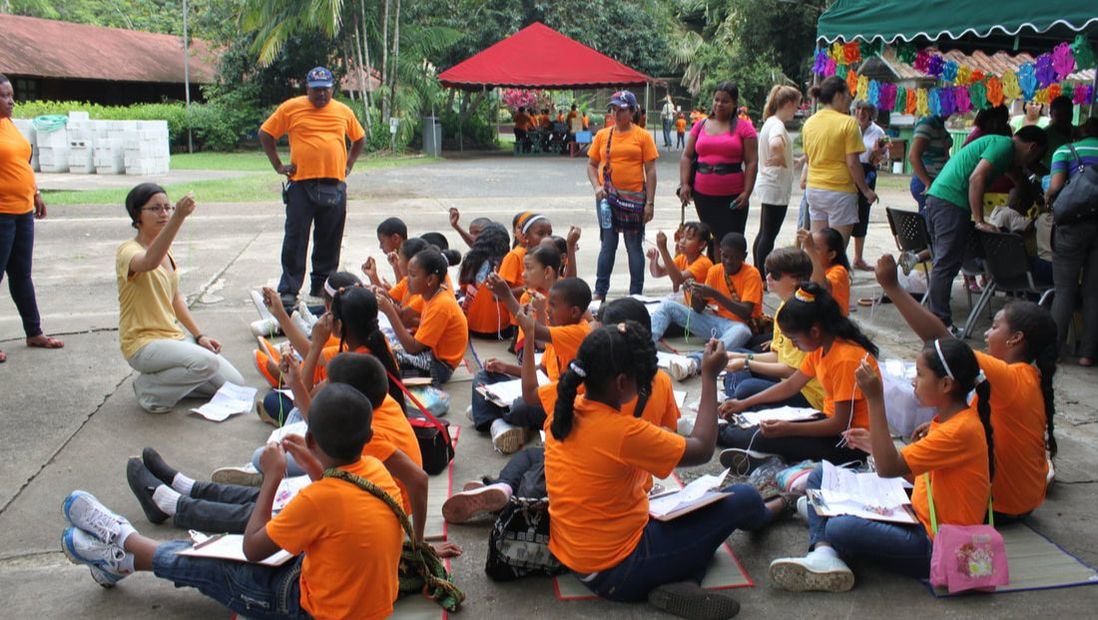Outreach
Our lab is committed to effective science communication, focused on knowledge springing from our research. Our education efforts are focused in particular in promoting inclusion and equity in science. We aim to actively promote increased understanding and appreciation of science. In particular, we center our attention in efforts to promote advancement of underrepresented minorities by reaching out directly to this audience as well as engaging individuals from majority-groups to increase appreciation for diversity.
We strive for excellence in science communication to broaden
participation and engagement in science #DiversityIsOurStrength
We strive for excellence in science communication to broaden
participation and engagement in science #DiversityIsOurStrength
Supporting K-12 Education
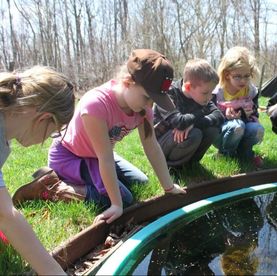
Every year we visit various K-12 schools to teach them about their local frog species and to inspire them to care about science. In particular, we have developed two sets of lesson plans that meet the Next Generation Science Standards (NGSS) targeting students at different levels:
(i) Elementary and Middle Schools - This lesson plan is centered around the ecology and conservation of wetlands and amphibians. Indiana has lots 87% of its wetland area and frogs provide an excellent opportunity to raise awareness of the importance of this habitat. Our curriculum aims to provide a unique educational experience to elementary students in the hopes of developing an environmentally and scientifically conscious younger generation.
Our lesson plan is adapted to the needs of each classroom and it involves a three day program in which we teach about ecology and conservation by bringing frogs to the classroom, taking kids on a field trip to Celery Marsh and the Ross Biological Reserve and lastly, developing a creative experience that integrates the concepts they learned with art. This last component is part of a collaboration with artist Gabriela Sincich.
(i) Elementary and Middle Schools - This lesson plan is centered around the ecology and conservation of wetlands and amphibians. Indiana has lots 87% of its wetland area and frogs provide an excellent opportunity to raise awareness of the importance of this habitat. Our curriculum aims to provide a unique educational experience to elementary students in the hopes of developing an environmentally and scientifically conscious younger generation.
Our lesson plan is adapted to the needs of each classroom and it involves a three day program in which we teach about ecology and conservation by bringing frogs to the classroom, taking kids on a field trip to Celery Marsh and the Ross Biological Reserve and lastly, developing a creative experience that integrates the concepts they learned with art. This last component is part of a collaboration with artist Gabriela Sincich.
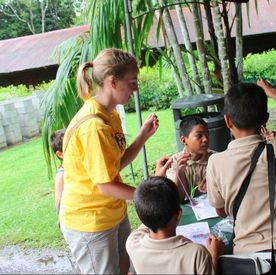
(ii) High-School - We developed a research-based lesson plan rooted on broad concepts required by current high school curriculum standards. We use the frog-bat-midge-trypanosome system we investigate as a case study to immerse students in the concepts and provide research opportunities in each lesson. We have implemented this lesson plan at one high school on the outskirts of Kokomo (IN) and are currently updating the lesson plan to make it available to schools nation wide.
In addition to visiting schools e are also are part of multi-PI team leading a project to involve UR high-school students in research. This project entitled "Diversity in Faces, Spaces and Places" is funded by the USDA NIFA REEU grant.
In addition to visiting schools e are also are part of multi-PI team leading a project to involve UR high-school students in research. This project entitled "Diversity in Faces, Spaces and Places" is funded by the USDA NIFA REEU grant.
Reaching out to our Community
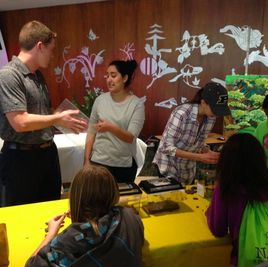
Every year we also participate in various community outreach events at Purdue University, our local library and other venues. Our lab has participated in "Science on Tap" at the Lafayette Brewing Company as well as at Purdue's homecoming 2018 that kicked off the celebration of hte University's 150 year anniversary. During the spring semester, our lab actively participates at Spring Fest, a free, university-wide event that showcases animals, art, insects and science in general. We teach families about frogs and animal communication using a variety of fun filled activities that include face painting, magnet making, building your own pet frog and a "match-the-call" game.
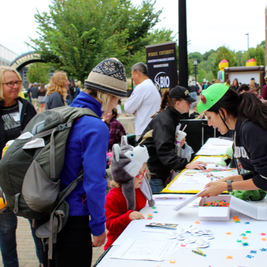
In collaboration with artist Gabriela Sincich, we have developed coloring pages of the frogs of the Greater Lafayette Area. We have also put together an easy-to-use guide to identify the most common frogs in this area. These resources have promoted enthusiasms for frogs and toads as well as awareness of their presence and importance in our community.

